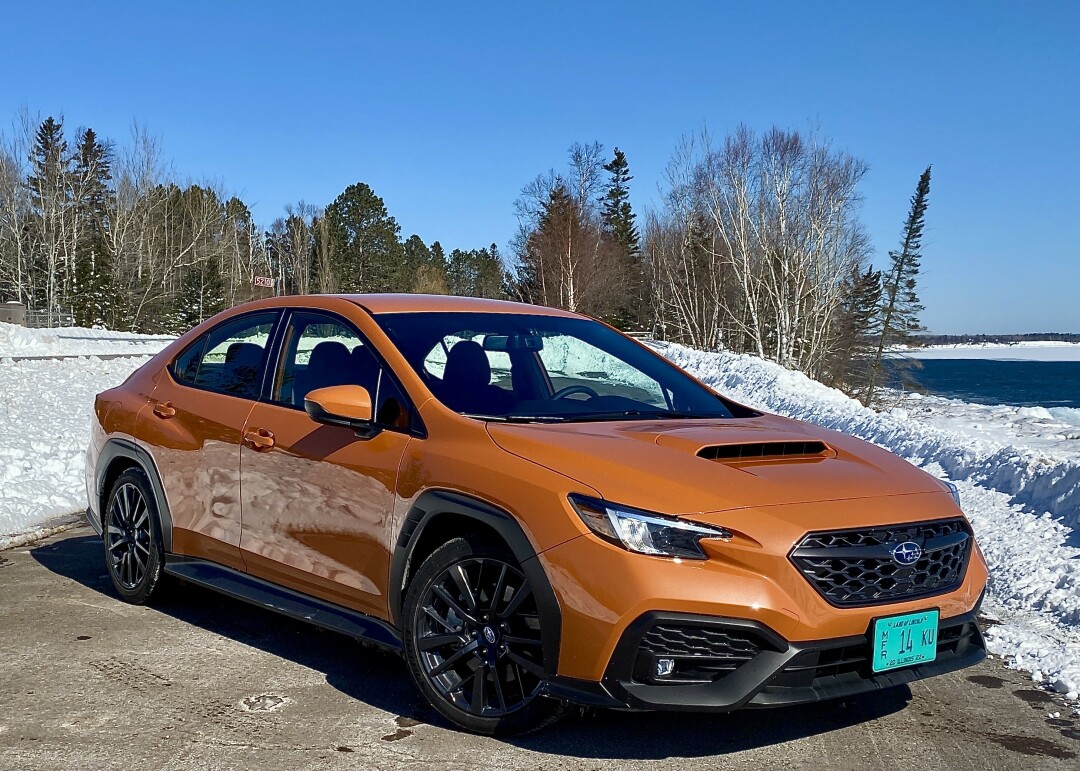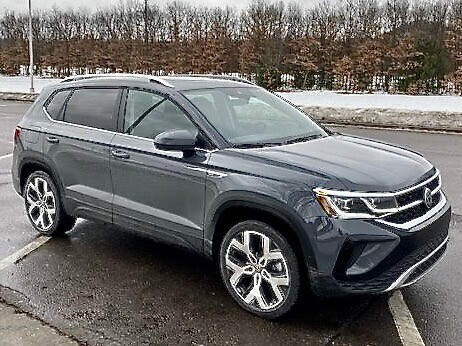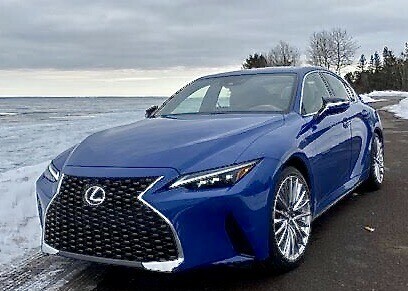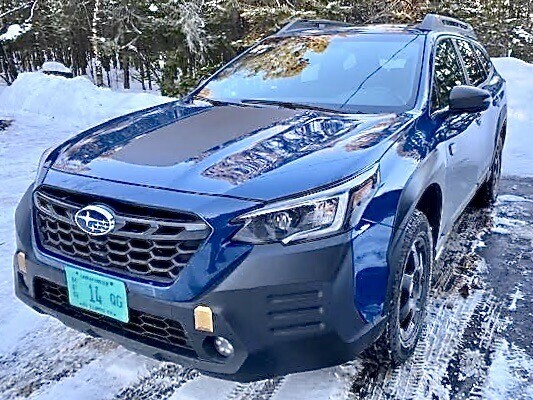News & Articles
Browse all content by date.

Slight remodeling sends Subaru WRX STI into 2022 as the resident AWD rocket. Photos by John Gilbert.
In the sometimes confusing and often exasperating world of selecting what you should buy for your next new car, the proliferation of vehicles of all shapes and sizes don’t help you choose.
Even the dependable world of Subaru can leave you baffled. Same with Volkswagen, but at least those companies stick with their nameplate. You could venture off into the world of Toyota, where you can find a parallel universe for the upscale Lexus brands.
There are others, but let’s just stick with those three for purposes of today’s evaluation.
For example, Volkswagen makes various cars and SUVs, and some cars that start with the Golf and zoom upward with the Jetta, and assorted others, such as the Arteon, and the Atlas and the Atlas Cross Sport, as you work your way up to the Tiguan in the SUV bracket. New for 2022 is the electric iD.4, and a very intriguing “tweeter” called the Taos.
Frankly, I like the Taos, after a week-long test drive. It is compact, smaller than the Tiguan, but has a huge rear seat – surprisingly large, considering the exterior compactness – and it is quick and agile, which is another surprise because the test car was powered by a 1.5-liter 4-cylinder turbocharged engine.
Interior appointments are well laid out and the seats are both comfortable and supportive. A larger 4-cylinder is available, but not necessary, and one of the surprising things about the Taos is that it cruises along mile after trouble-free mile of freeway driving in close to complete silence.
You can figure on spending $25,000 or so, and more if you choose the all-wheel drive version, which I recommend in Minnesota for winter driving. It not only looks good, in a sort of Tiguan-on-a-diet way, but it delivered only about 23 miles per gallon on a trip we took with it, but driving more conservatively on another trek, we got it up to 27.
One of the worldly competitors for Volkswagen comes from Japan, with Subaru. I test drove both the Outback Wilderness Edition wagon, which seems to have grown, along with several other Subaru models, all of which use their established flat oppose-piston 4 or 6 engines.

Volkswagen’s Taos compact SUV is comfortable and virtually silent on the freeway.
I’ve found that if you drive a Subaru hard, your mileage suffers perhaps more than cars from any other manufacturer I’m familiar with. But if you keep it to 65 with gusts to 70 on a freeway trip you can coax reasonable fuel economy out of it.
Of course, every closet hotrodder’s dream car is the compact Subaru WRX, particularly the STi version, which is an absolute bullet – fun to drive and agile to maneuver. You can find a basic WRX for about $27,500, but if you buy the loaded WRXSTi, you’ll pay more than $40,000 for the thrill of putting the closest thing to a pro rally car on the street.
It is, of course, all-wheel drive and well balanced, and the 2.4 liter four-cylinder engine and while you get what you pay for in driving kicks. If you get the GT version, you can choose a 6-speed stick shift and a new suspension that is adjustable and handles the power increase of the new engine as it revs to 271 horsepower.
For more sedate family driving, the Ascent and the Forester work well, and the old standard Legacy and Outback sedan and wagon do the job.
Personally, I like the compact Crosstrek among Subaru’s wagons, but the Outback is a nice quantum leap to a larger size. It also has a basic 2.5-liter engine, or you can go smaller, to 2.4-liters, and get the turbocharged engine that the WRX STi uses to rise above the normal Impreza compacts.
People who buy Subarus usually buy them again, swearing by their durability and sturdiness, and they can accommodate the disappointingly low fuel economy. As gasoline zooms up past $4 and $5 per gallon, however, you may want to do some comparison shopping and check out some hybrids.

Lexus IS300 is an all-wheel-drive performance-luxury sedan.
Turning to Toyota, I celebrate the return, or resurrection, of the Venza. A compact wagon, the Venza can be had with all-wheel drive as a bargain answer to heavyweight SUVs. When you make as many cars and SUVs as Toyota, we’re talking Camrys, Corollas, Avalon’s, Highlanders, Priuses, RAV4s, Sequoias, Siennas, Supras, that pretty much fill every niche in the industry.
The Venza fits between the RAV4 and the Highlander in size and stature, but it is lower and sleeker than either. It comes as an all-wheel-drive powered by a 2.5-liter 4-cylinder and Toyota’s bullet-proof hybrid system.
The road noise was startling in the Venza, especially compared to the vault-like Taos. Venza are priced between $33,000 and $40,000, depending on how you load it up.
If you want to seek out higher-end compact SUV-type vehicles, I recommend trying the Lexus IS300. It is not an SUV, but a sleek, sporty luxury sedan, powered by a potent 260-horsepower V6, in the all-wheel-drive version I test drove. You can get it with rear-wheel drive, but you will not enjoy the white-knuckling in Minnesota wintertime.

Subaru Outback Wildeness Edition is larger and roomier.
Toyota plans to load a 5-liter V8 into the IS, making it a mind-blowing 472 horsepower IS500, but we’ll wait for that one. The AWD V6 is plenty, and beware, because while you can select which drive mode you want, up to and including “snow,” the Lexus seems to want to default to “normal” every time you start it anew, and the low-profile high-performance tires do not like snow and ice.
Sticker on the IS300 ranges from $40,000 to $70,000, depending on how much luxury you tick from the option sheet.
Toyota is just on the verge of vaulting into the high-tech engine-building business, but not may take a couple of years. The dependability and durability of all things Toyota make for a profit margin that is hard to quibble with.
| Tweet |


